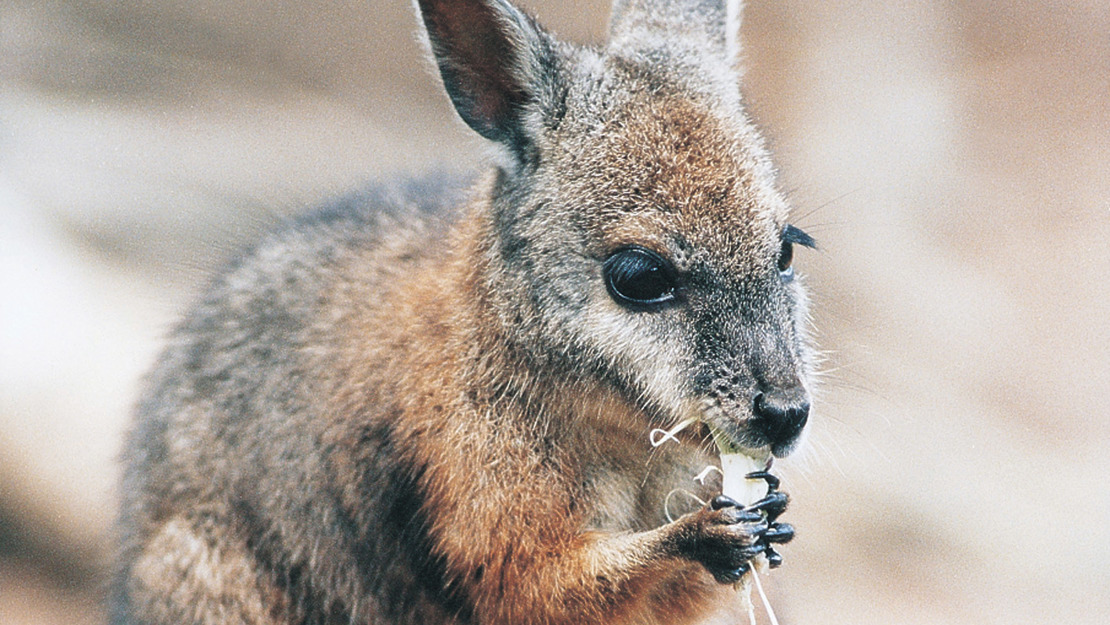Notamacropus, Petrogale, Wallabia spp.
Wallaby
Also known as:
Dama wallaby, Parma wallaby (North Island, Kawau Island), Brush-tailed rock wallaby, Swamp wallaby (Kawau Island only), Bennetts Wallaby (South Island only)
Family: Macropodidae
Origin: Australia

A Dama wallaby eating young shoots
Regional Pest Management Plan (RPMP) status
- Kawau island — Eradication
- Whole region — Exclusion
- Hauraki Gulf Controlled Area Notice pest
General description
Medium-sized, semi-nocturnal marsupial mammals. Large hind legs used for jumping and kicking, tail used for support and balance.
Where did they originate from?
- From Australia, where they were formerly widespread in southern mainland Australia.
- Dama, parma, swamp and brush-tailed rock wallaby were introduced to Kawau Island by Sir George Grey around 1870, along with other species, such as monkeys, zebra and gnu.
- In 1912, dama wallaby from Kawau Island were released near Lake Ōkāreka in Rotorua. Since that time, they have established over more than 200,000ha across the Bay of Plenty and Waikato regions and are spreading to new areas, including towards the mainland Auckland region.
- Genetic testing has confirmed that parma wallaby also exist in the BOP & were likely liberated there in the 1990’s.
What you need to know
To help protect our environment, you must not breed, distribute, release or sell any wallaby within the Auckland region.
Management
- Auckland Council is a partner of Tipu Mātoro; a national programme focussing on eradicating wallabies from Aotearoa New Zealand.
- The only populations of feral wallaby lie on Kawau Island. The Pest free Kawau Island programme started in 2025 and aims to eradicate all wallaby species from the island.
- If you see a wallaby anywhere in the Auckland region other than Kawau Island, report it at reportwallabies.nz
Habitats
- Wallaby can be found in both native forest, exotic forest and dense scrub, preferring habitat with access to pasture and/or sunny clearings. They often congregate in small family groups.
- As wallaby are cautious and nocturnal (they seek shelter during the day in dense forest or scrub), they can be difficult to detect.
Impact on environment
- Wallaby feed on native tree seedlings, ferns and grasses to such an extent that over time they limit the regeneration of some species, altering the structure and composition of our native forests. Some of the species selectively browsed by wallaby are important as a food source for native birds and wildlife.
- In exotic plantations, wallaby can damage pine and eucalyptus seedlings.
- On farmland they compete with stock for pasture.




